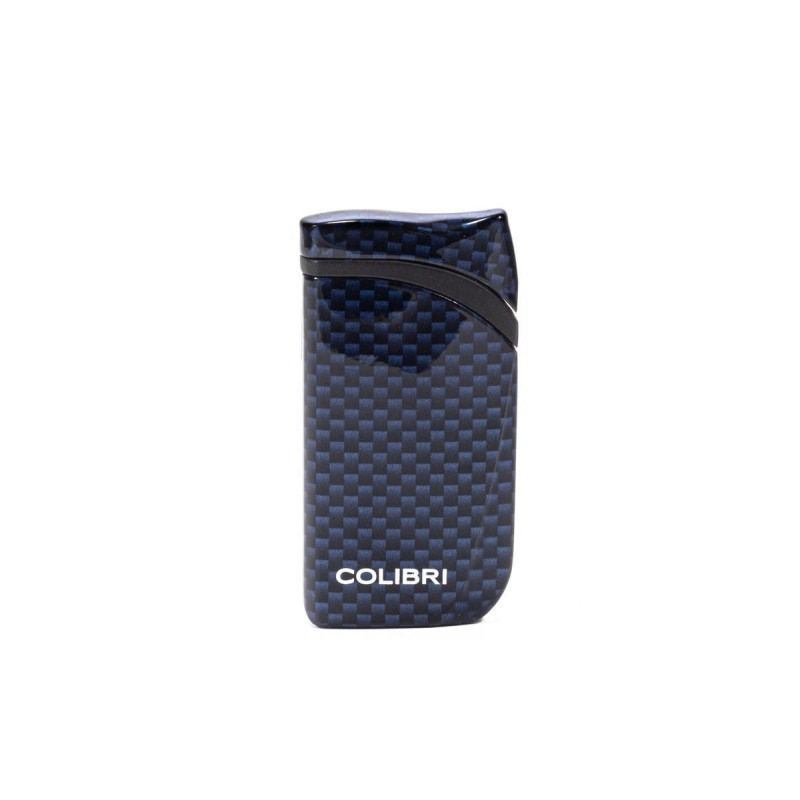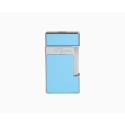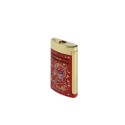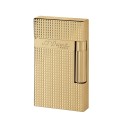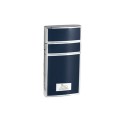To light a cigar means more than producing flame. It calls for control, timing, and proper distance. A fine cigar reacts to heat with exactness. Harsh flame or uneven rotation leaves it scarred.
True flavor appears only through correct ignition. Quality tobacco responds best when warmed gradually. Tools play a part, but technique determines the result.
Missteps ruin the balance. Inconsistent lighting causes uneven burn, bitterness, and wasted potential. Every part of the process serves a single goal: steady, clean combustion.
Explore each step in detail. Learn how to light a cigar with precision, select the proper tools, and avoid common errors that spoil the experience.
Steps to Light the Cigar Properly
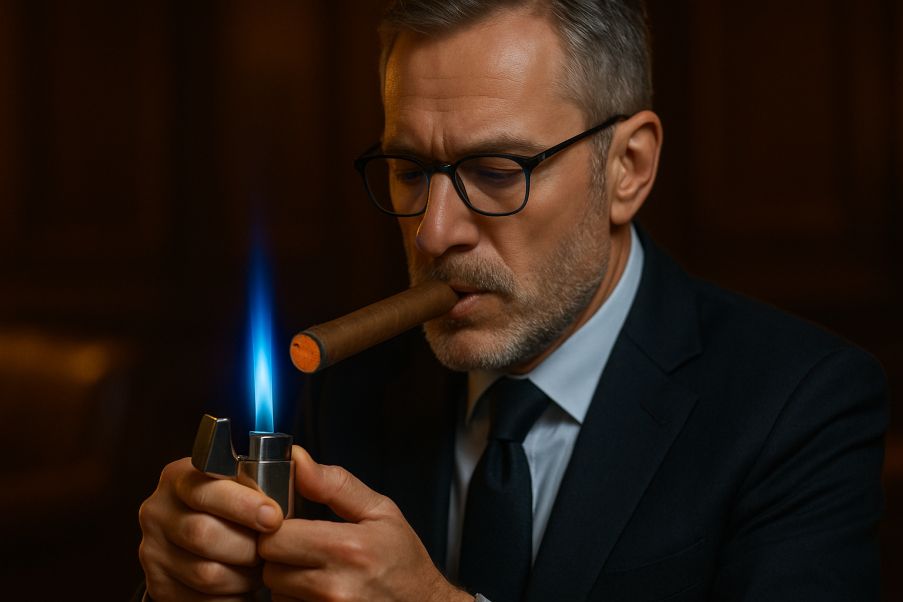
Once the cigar is cut, the real process begins. The goal is even ignition with no contact between flame and leaf. Each move builds the burn. Timing, spacing, and rotation must stay exact.
Follow each of these steps for a steady, smooth start:
Step 1. Choose a Proper Flame
Use a cigar lighter with a dual-nozzle flame. That V-shaped heat wraps the foot and covers the full diameter, helping the glow appear faster and more evenly.
Step 2. Hold the Cigar at an Angle
Grip the cigar gently between your fingers. Tilt it downward, never flat. Keep the foot two centimeters above the flame. Let the heat warm the tobacco-never touch it directly.
Step 3. Rotate While Heating
Turn the cigar slowly over the flame. That movement helps every part of the foot receive the same amount of heat. Uneven exposure leads to dark spots and poor ignition.
Step 4. Check the Burn with a Gentle Blow
Once the foot shows some glow, blow across the end softly. That reveals cold patches. If one area lags behind, rotate and apply a bit more heat until the entire rim glows orange.
Step 5. Let the Ash Form Naturally
Do not flick off the ash too soon. A small layer at the end protects the ember and keeps the burn consistent. That ash helps maintain structure during the early stage of smoking.
Our catalog includes a full selection of premium cigar lighters, with trusted names like S.T. Dupont and Lubinski. Each model suits both experienced smokers and those learning the craft.
What Side of the Cigar Do You Light?
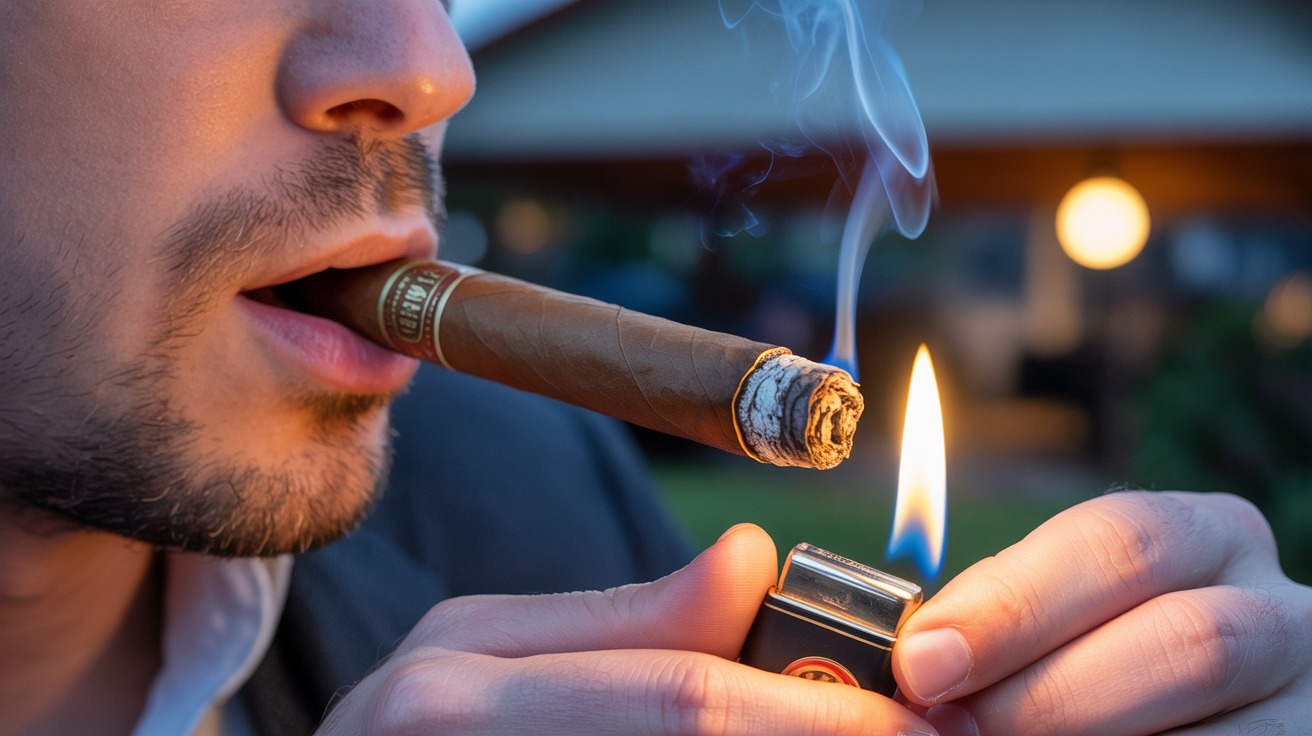
Every cigar has two ends. One is sealed with a cap. The other is open and shows the filler. The correct end to light is always the foot. That is the open side where combustion begins. The head stays untouched by flame and belongs in the mouth.
Lighting the wrong side destroys the structure and ruins the airflow. A blocked draw means poor burn, bitterness, and wasted tobacco. Always confirm the correct end before lighting.
The Foot Is Where the Flame Starts
The foot holds the filler exposed. That is the section designed to absorb heat. Once warmed properly, it allows full ignition across the entire base. Heat reaches the binder and filler at once, producing a clean and even burn.
Hold the cigar above the flame. Keep space between tobacco and fire. Rotate gently until the outer edge begins to glow. That method prevents scorching and keeps the wrapper intact.
The Head Is for Cutting, Not Lighting
The head holds the cap. That layer seals the cigar and protects its shape. Before smoking, that part must be cut to open the draw. It never faces heat. Applying flame to the head breaks the wrapper and locks bitterness into the filler.
Accessories for lighting the cigar

The tool matters as much as the technique. Each source of flame carries distinct advantages or risks. To light a cigar without ruining its flavor, the flame must burn clean and steady.
Flame Sources Ranked by Quality
-
Butane Torch Lighters: Jet-style lighters offer a consistent, odorless flame. Most models allow precise control over heat direction and intensity.
Our recommendation - Colibri Falcon Jet Flame Lighter
-
Wooden Cigar Matches: Long matches made for cigars burn clean and slow. Always wait until the sulfur burns off before bringing the flame near tobacco.
-
Standard Butane Lighters: Acceptable for casual use. Not as efficient as torch models but far better than gasoline lighters.
-
Gasoline Lighters: Should never be used. The fuel alters aroma and spoils the taste on contact.
Why Torch Lighters Excel
-
Focused flame prevents overburn
-
Easy rotation during ignition
-
Steady burn in outdoor conditions
-
Commonly built with dual or triple nozzles for wide coverage
When to Use Matches
Matches serve those who respect precision and patience. In controlled indoor spaces, away from wind or drafts, a long wooden match delivers clean flame with no risk of fuel interference.
That method suits cigars with thinner ring gauges, where delicate construction demands careful ignition.
Lighting with a match slows the process in the best way. It gives time to warm the foot gently. No rushing, no harsh bursts of heat. The cigar receives only what it needs-nothing more.
How to Extinguish a Cigar Properly?
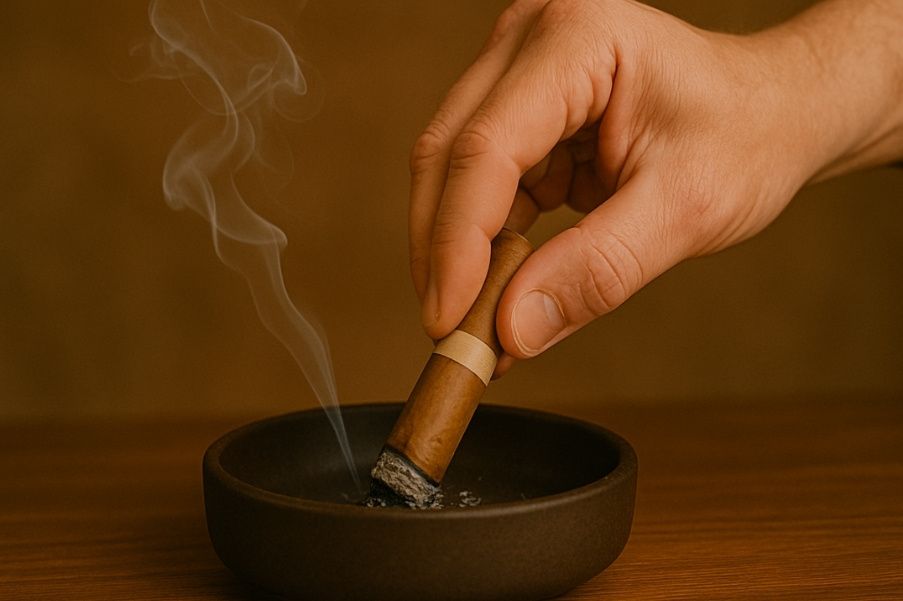
If a cigar goes out before you finish it, blow gently through the body. That clears out stale smoke. Once the foot cools and the ember settles, you can relight it without damaging the flavor.
Always wait until the cigar cools before using flame again. Applying heat too soon affects the internal balance and leaves a bitter taste. Rushed relighting disrupts the oils and breaks the original profile.
When you want to stop on purpose, place the cigar in an ashtray and leave it alone. Do not press it, crush it, or try to snuff it out. Let it extinguish naturally.
Before setting it down, blow through the cigar once. That step removes smoke trapped inside and helps preserve the taste if you return to it later.
Never handle it like a cigarette. A cigar is built with long filler, not shredded tobacco. Crushing it in the tray creates foul odors and wastes the rest.
Why You Should Never Inhale a Cigar?
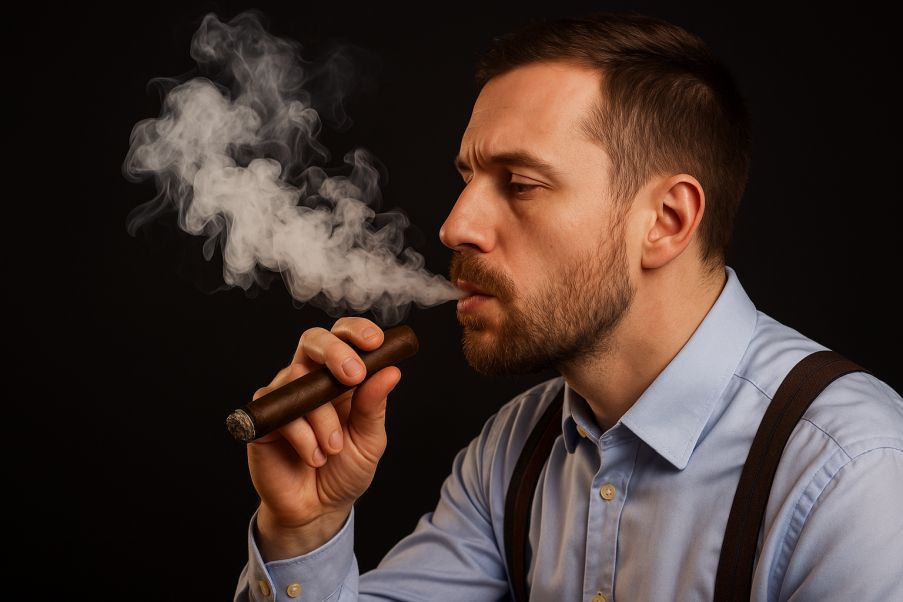
A cigar delivers taste through the mouth. That is its only purpose. Pulling smoke into the lungs goes against how cigars are made. The blend carries more oils and strength than cigarette tobacco. Inhalation turns richness into discomfort.
Each draw should enter the mouth, sit briefly, and then leave. That rhythm preserves flavor and protects the smoker. Deep intake of cigar smoke causes irritation, dizziness, and ruins balance.
Manufacturers design cigars for controlled mouth exposure. They never intend the smoke to go beyond that. Every detail-burn rate, filler density, flavor release-relies on proper draw technique.
Keep the smoke where it belongs. Taste it. Do not breathe it.
Is There a Wrong Way to Light a Cigar?
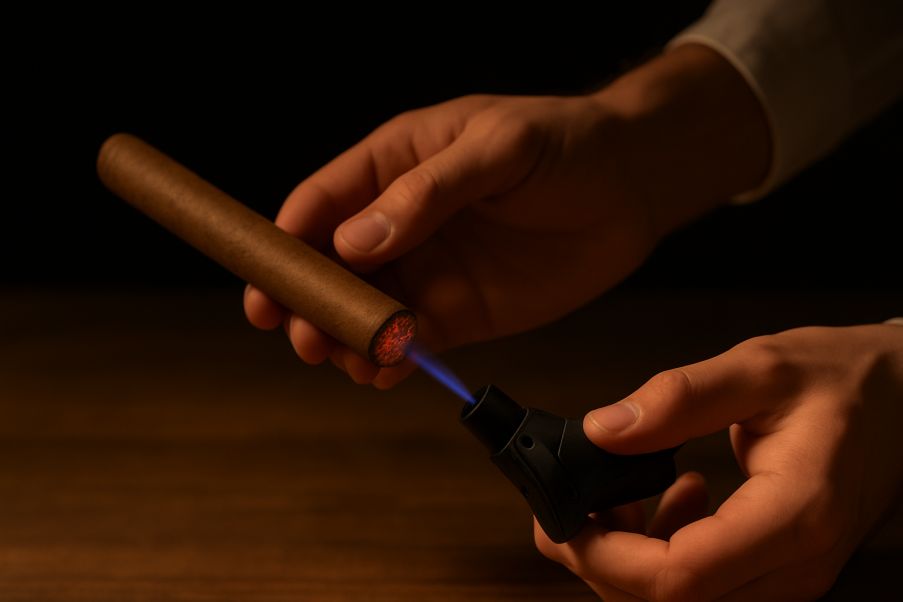
Plenty of ways exist to light a cigar. Most of them are wrong. If the foot blackens before it glows, if one side burns faster than the other, or if the first puff tastes like kerosene, then the cigar has already lost. You cannot rescue bad ignition. You can only avoid it.
Flame Too Close
Touching the leaf with fire does not make it light faster. It scorches the wrapper, blackens the filler, and locks bitterness into the draw. A cigar should feel the heat, not eat the flame.
Rushed Rotation
Turning the cigar too fast across the flame leads to partial ignition. One half glows, the other stays dead. That leaves you correcting for minutes instead of enjoying the first draw.
Puffing Too Soon
Drawing before the foot glows evenly disrupts balance. The ember grows sharp. The burn line bends out of shape. A cigar needs to be ready before it meets your mouth.
Killing the Ash Too Early
Flicking the ash as soon as it forms breaks the thermal shield. The cigar burns hotter, loses flavor, and forces you to fight for control. Let the ash stay. It knows what to do.
Frequently Asked Questions
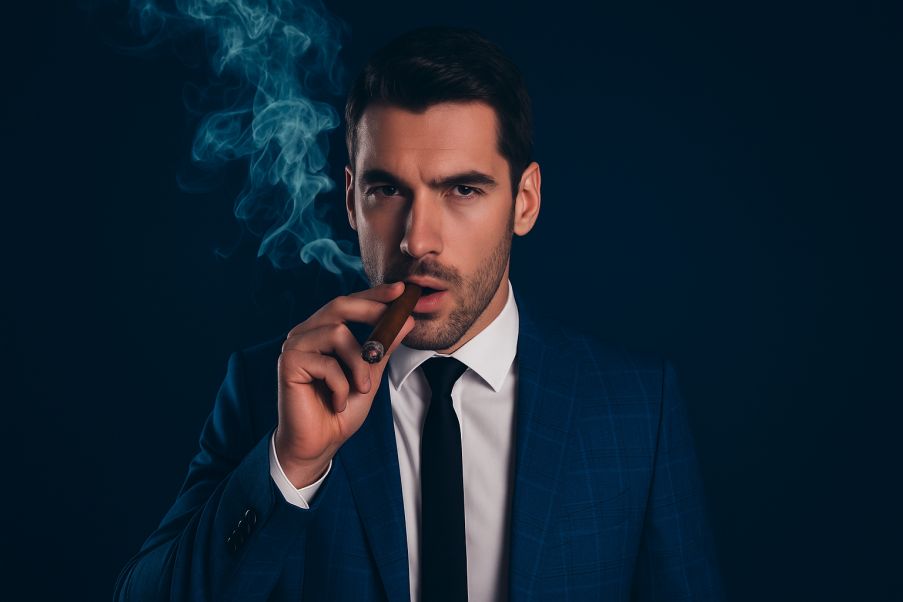
Is it OK to relight a cigar?
Yes, but only once. After a second relight, the flavor drops fast. Oils inside the filler break down when burned twice. Heat builds up, bitterness increases, and the draw turns flat.
If the cigar goes cold and relights smoothly the first time, you still get most of the original character. Anything beyond that, and you are chasing smoke that no longer holds form.
Can you save half a cigar for later?
Yes, if you do it properly. Let it go out on its own. Do not crush it. Blow through the body to remove the old smoke. Let it cool completely.
After that, store it in a sealed container for no more than a few hours. Beyond that window, the taste will go stale. Once relit, it will never match the first session, but it may still offer a fair second run.
Can a cigar go bad if left out?
Yes. A cigar left outside a humidor loses balance. Humidity shifts. Oils dry out. The wrapper cracks or swells. After enough time, relighting becomes impossible. If the cigar feels brittle or has lost its smell, it is no longer worth saving.
Do cigars give you a buzz?
Yes. Strong cigars can produce a noticeable nicotine buzz, especially on an empty stomach or without breaks between draws.
The effect depends on the blend, the size, and how the cigar is smoked. Taking slow, spaced draws and resting between puffs keeps the experience smooth.
Final Thoughts
To light a cigar is to take responsibility for everything that follows. That single act defines how the cigar will draw, how long it will last, and how the flavor will unfold with each passing minute.
Nothing in the process works by chance, and nothing forgives a careless approach.
Each step (cutting, heating, rotating, and resting) has a purpose. When done with precision, the cigar rewards you with steady burn, rich aroma, and layered complexity that stays balanced to the end. No quick flame or random spark can deliver that result.

